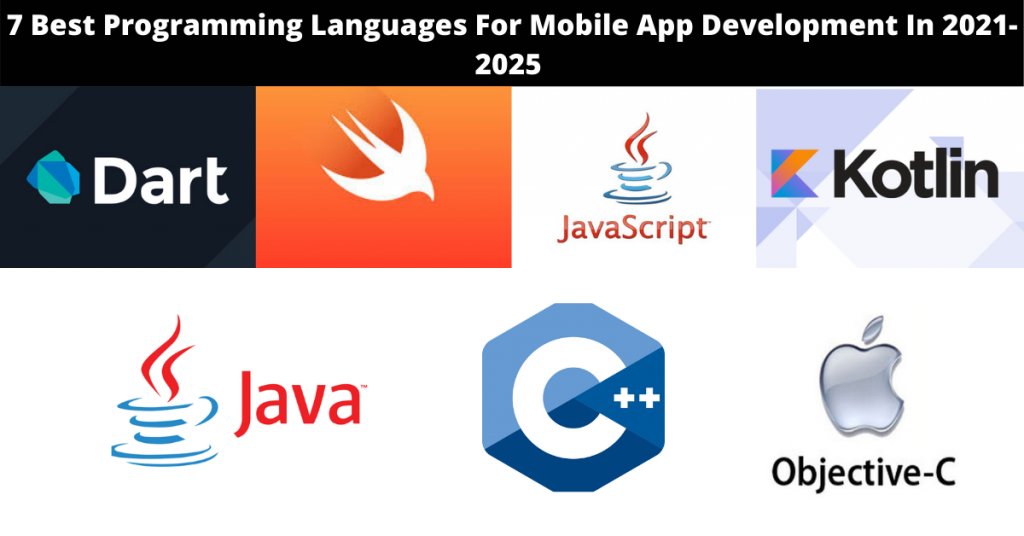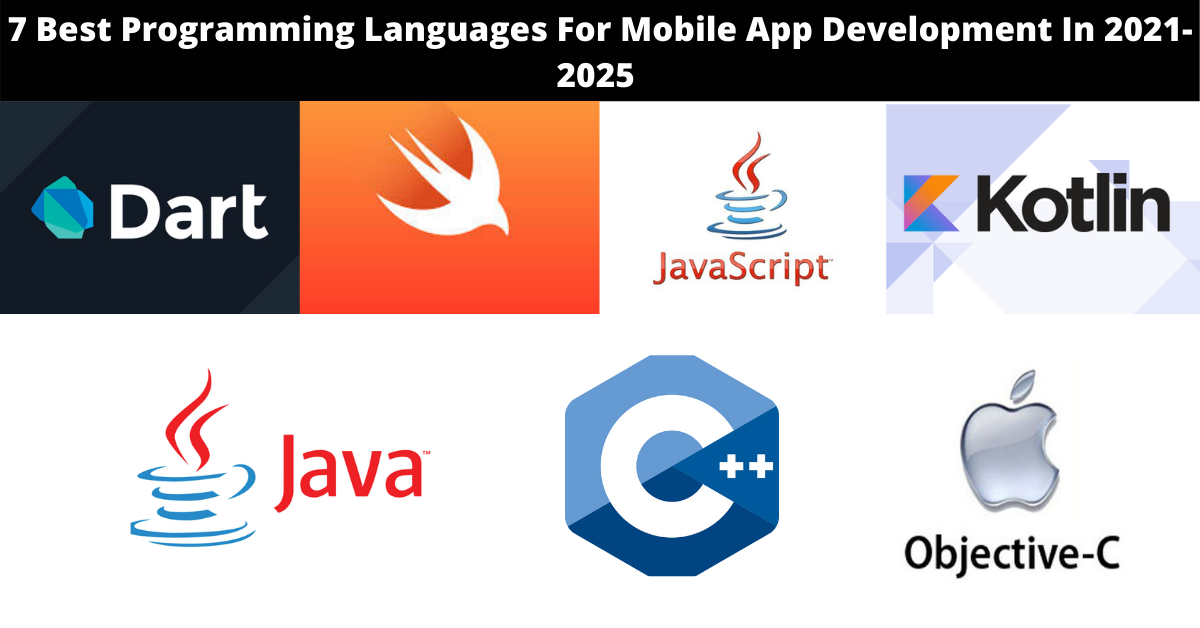Programming languages act as the base for Data Science and Information Technology markets. Several programming languages are used by Data Scientists and Software Developers to create ingenious mobile applications. Such applications are used in various industries like education, banking & finance, healthcare, IoT, logistics, etc.
There is no doubt in the fact that we are surrounded by apps and thus are dependent on them. Such applications make every aspect of our life more favorable and comfortable. As a result, coding skills are one of the most high-paid professions in Web Design, Cybersecurity, AI & ML, IT, Data Analytics, and Business Intelligence.

Though there are tremendous programming languages present in the market to develop software applications. However, this passage will elaborate on the popular programming languages in the near future mainly from 2021 to 2025.
Let us begin!
1.DART
This is an object-oriented, open-source, general-purpose programming language created by Google in the year 2011. It makes use of a ‘C’ style syntax and seldomly trans uses it into JavaScript. It offers web development applications for both server-side & client-side. Further, it has applications for both cross-platform and native mobile development.
Dart is a very advantageous programming language. For instance, its code can be given over mobile and web app, it is a very easy-to-learn language when used with C-style syntax, and it is backed by a helpful & super-friendly community.
However, it presently has a very low backend focus, i.e., API/SErver as well as to help the core domain, the generic and subs domain packages need to be written.
2.SWIFT
This is a compiled, multi-paradigm, and general-purpose programming language built particularly as an option for Objective-C while developing MacOS and Native iOS apps. This is not the too old language being launched in 2014 by Apple Inc. However, it assumes to replace Objective-C already.
As the name suggests, Swift is a fast programming language. It has an LLVM compiler framework that converts Swift code into optimized native code to make the most of modern hardware.
It has a simple, clean, and concise syntax like the English language, which makes it easier to maintain and write. With its serious safeguard, it eliminates errors and raises readability in code.
3.JAVASCRIPT
This was built in 1995 by Netscape Communications Corporation Programmer and still is the most popular language among programmers. Mainly, it was designed for developing mobile apps. However, lately, it is also possible to develop hybrid mobile apps with JavaScript due to CSS, HTML, & Ajax, and mobile frameworks such as jQuery Mobile, PhoneGap, and Ionic are also helpful.
As per the 2016 Stack Overflow Developer Survey, JavaScrip was the most preferred programming language globally. In fact, the back-end developers gave it priority over others. Further, data offered by SlashData states that over 10.7 million software developers used JavaScript in 2018.
JavaScript has APIs for dates, standard data structures, text, and regular expressions. Further, it has numerous libraries to build ML models like Brain.js, Mind, TensorFlow.js, etc.
4.KOTLIN
Again, this is a general-purpose, statically-typed programming language that is designed to be completely interoperable with Java. Also, it compiles with native code or JavaScript as JVM is Kotlin’s main target. Due to the flawless interoperation between Java and Kotlin, the development of Android applications becomes more efficient and much faster.
Kotlin has a very easy-to-learn structure. Besides Android app development, it can also be used for desktop-app development, web development, and server-side development. Kotlin as a programming language is safe, tool-friendly, and concise. This can be bundled with any Java IDE and even created through the command line.
5.JAVA
This is another powerful, effective, and popular programming language with high demand for career growth as well as jobs. Though Java is mainly a server-side programming language it can be utilized for developing strong backend servers and building Android apps.
Java is very beneficial for a beginner in app development. One can not only excel in Android app development but can also become a complete stack developer by generating a backend in Java.
With a large and robust user community, Java is expected to be the most promising programming language in 2021.
6.C++
This object-oriented programming language was generated in 1985 by Bjarne Stroustrup. It has cross-platform functionality with low-level memory manipulation. Moreover, it can be used for producing new operating systems as well as programming languages.
C++ is the most powerful and strongest language for developing mobile apps. A few of its incredible mobile app examples are Google Chrome, Photoshop, PayPal, and World of Warcraft.
Its consolidating debugging experience makes it viable to build mobile apps for Windows, iOS, and Android. However, the super-fast code execution makes it ideal for developing high-performance mobile games.
7.OBJECTIVE-C
Brad Cox and Tom Love developed this general-purpose and object-oriented programming language in 1984. This was the main preference for iOS app development before Swift was launched.
Objective-C is very useful in allowing message forwarding among objects and dynamic typing, popularly for iOS. Even though Swift is available, massive developers are using it more, based on the Objective-C projects on github.com and the queries on StackOverflow.com.
Unlike Swift, Objective-C can collaborate with C++ and C. Hence, this language is still worthy in the future.
CONCLUSION
As per the passage above, the anticipated popular programming languages for building mobile apps in the years between 2021 to 2025 are highlighted here. To make a mark in the mobile app development market, having a grip on these programming languages is necessary.
